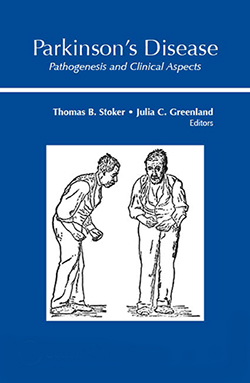The Differential Diagnosis of Parkinson’s Disease
Main Article Content
ABSTRACT
Parkinson’s disease (PD) is a common, progressive neurodegenerative disease. It is a movement disorder presenting primarily with a combination of bradykinesia, rigidity and tremor. However, it has a variable presentation, including the presence of non-motor symptoms such as cognitive impairment and sleep disturbance. The diagnosis is made clinically by the recognition of these key features and the exclusion of other causes of parkinsonism. This chapter describes how to recognize the core motor and non-motor features of PD, as well as atypical features that suggest an alternative cause of parkinsonism. The essentials of these alternative diagnoses are outlined, and the list of differentials is structured into sections on other neurodegenerative causes of parkinsonism, secondary causes of parkinsonism, genetic causes of parkinsonism, tremor disorders, and non-neurological differentials of PD.
Downloads
Metrics
Article Details

This work is licensed under a Creative Commons Attribution-NonCommercial 4.0 International License.

